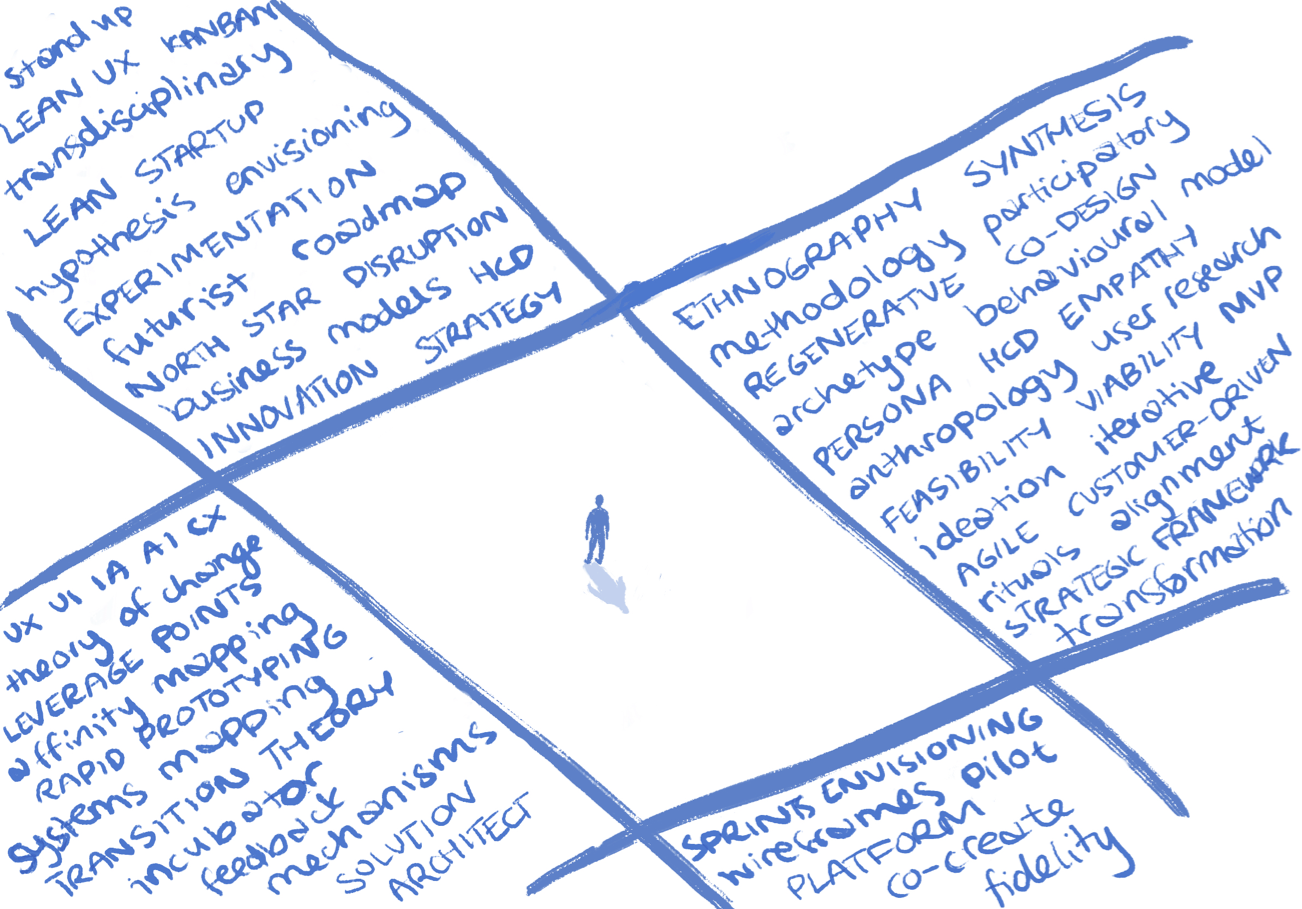NewslettersAugust 17th, 2021
PG #88: The power dynamics of language


I remember sitting in meetings as a fresh graduate at a large healthcare organisation many years ago. At the back of my notebook, I had a list of acronyms or words that I’d never heard before, and I would go to my manager every day and ask for definitions.
It was alienating to sit in meetings and feel like I couldn’t contribute because I didn’t understand the language they were speaking in.
Over time, I not only deciphered the corporate and health sector language but began to unwittingly adopt it into my own vocabulary. We are all guilty of it, regardless of sector or environment. Corporates, not-for-profits, government, academic institutions, even the arts or trades; each sphere has its own terminology that can be challenging to interpret as an outsider.
The design world is not immune. Even though we pride ourselves on being able to step out of our own world into those of others, we wrap all of our work up in a shroud of insider terminology.
CX, UX, UI, Experience Design, Human Centred Design, Design Thinking, Lean Six Sigma, Lean UX, Lean Startup, Agile, Organisational Design, Business Model Innovation, Co-design, Participatory Design, Regenerative Design, Systems Thinking…
It’s not wrong that each of these design practices and methods have been given distinct names and a language to describe them, but it can limit the degree to which people can engage with them.
The ironic thing is that many of these practices were created to restore and empower communities, but the language that surrounds them assumes a level of existing knowledge that prevents those communities from contributing or participating in a meaningful way. The collective power sits with the ‘experts’ who speak the dominant language, while those who are unfamiliar are unintentionally marginalised.
Even the word ‘strategy’ itself can sound like a hollow management-speak cliche and be met with eyerolls.
I’m currently working with an organisation to design their digital strategy in collaboration with their employees. We have found that in order for the strategy to be widely endorsed, adopted and actioned across the organisation, it must communicate the organisational digital ambition in plain language. The technical terminology and buzzwords in their previous strategy were met with a lack of understanding and interest, and as a result, it didn’t get very far.
Think about why you use certain words. Is it your natural impulse, or is it because you feel like that terminology comes with the job title? When we immerse ourselves in a particular field, we start to unconsciously feel pressure to speak or write in a certain way.
As a leader in your discipline or workplace, you set the norm. Your colleagues or employees will most likely think that they should speak like you.
Don’t take for granted that everyone understands what you’re saying. If technical terminology is required, define it and share it widely and openly. Use tools like this guide to plain language to shape and simplify the way you communicate. Shared knowledge and understanding helps restore the balance of power.


